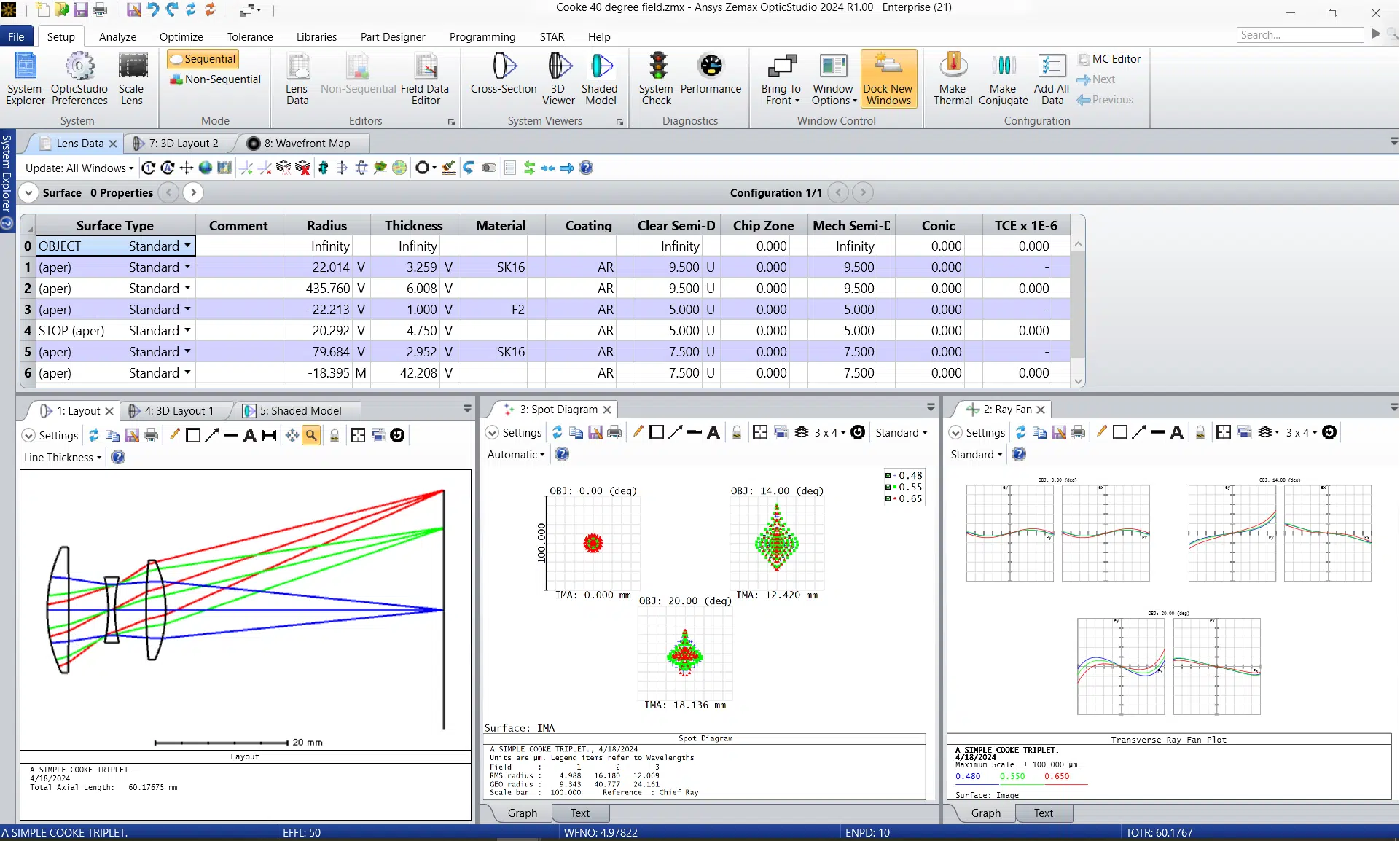Ansys Zemax: Introduction to Optical System Design
Course Overview:
This paid training course covers the basics of optical system design in Ansys Zemax OpticStudio. Participants will learn the fundamentals of optical design, including identifying aberrations, different optimization techniques, image simulations, and tolerancing. Specific topics include: ray and wave aberrations, creating a merit function, global optimization, coordinate breaks, building a tolerance file, and desensitization.
Who should take this course:
- Beginners interested in optical system design who need a comprehensive overview of Ansys Zemax OpticStudio.
- Intermediate users who do not have a strong foundation and would like to thoroughly learn basic concepts or refine methods taught during the course.
With completion of this Ansys Zemax Training, you will:
- Become proficient in:
- Identifying ray and wave aberrations in an optical system
- Creating a merit function for local or global optimization
- Coordinate breaks and multiple configurations
- Image simulation
- Tolerancing
Contact for ZEMAX 101 Training

Course Agenda | ZEMAX 101
Module 1: Introduction to Ansys Zemax OpticStudio
• Introduction to Ansys Zemax OpticStudio
• Glass Properties
• Workshop: Making a Lens
Module 2: Optics Review
• First Order Optics
• Ray Tracing, Wavefront and Ray Aberrations
• Third Order Optics and Higher Order Aberrations
• Workshop: Aberration Spotting
Module 3: Optimization Part 1
• Introduction to Optimization
• Merit Function and Reference Points
• Boundary Operands
• Complex Operands
• Workshop: Optimizing a Singlet
Module 4: Optimization Part 2
• Global Optimization
• Workshop: Optimizing a Doublet
Module 5: 3D Systems
• Coordinate Breaks
• Multiple Configurations
• Local and Global Coordinates
• Workshops: Off Axis Parabola, Dispersive Prism
Module 6: Diffraction, MTF, and Image Simulation
• Diffraction, MTF, Image Quality
• Image Simulation
• Workshop: Image Simulation
Module 7: Tolerancing Part 1
• Introduction to Tolerancing
• Tolerancing Analyses
• Tolerance Operands
• Workshop: Building a Tolerance File
Module 8: Tolerancing Part 2
• Compensators
• High Precision Grade Tolerances
• Workshop: Tolerancing a Singlet
Module 9: Tolerancing Part 3
• Tolerancing Irregularity
• User-Defined Tolerances
• Workshop: Tolerancing in Double Pass
Module 10: Tolerancing Part 4
• Scripted Tolerancing
• Desensitization
• Tolerancing Fiber Coupler
• Workshop: Tolerancing a Cooke Triplet

